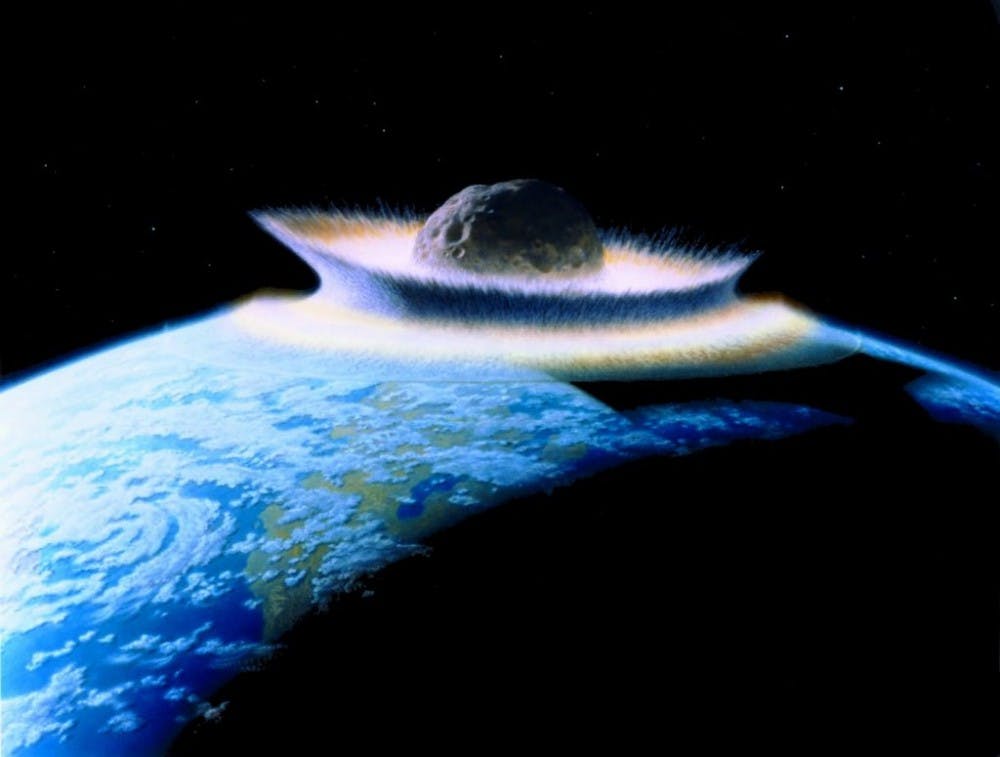Around 66 million years ago, an asteroid hit the surface of Earth and drastically changed the Earth’s geological landscape. While this asteroid is widely believed to have wiped out the entire dinosaur population that once roamed the planet, scientists now theorize that the asteroid could also have momentarily liquefied the surface of the Earth.
A more literal way of portraying what happened might be to say that the asteroid essentially punched a hole in Earth’s crust. When it hit, the asteroid created a hole that extended 60 miles deep beneath Earth’s surface, leaving behind visible scars that can still be seen to this day.
It is a logical deduction that the asteroid might have smashed right through the crust and into the mantle. This enormous force caused rocks to be shot upward to a height twice that of Mount Everest.
The rocks gradually settled down and scattered around the hole, eventually piling up to form a ring of mountains. This event, according to Sean Gulick, a geophysicist working at the University of Texas at Austin, most likely occurred within five minutes.
Earlier this year, Gulick was part of a team of researchers that drilled for geological samples in the mountain ring that resides in the Chicxulub crater off the coast of Mexico.
The samples they took can offer scientists and geologists a significant amount of evidence as they examine how Earth’s surface behaved immediately after the asteroid impact.
Some researchers believe that the mountain rings were formed by the melting of the surface, caused by the enormous amount of heat released after the collision. In its liquid-like state, according to this theory, the surface formed a ring of peaks as the debris left behind from the impact flowed and congregated towards the center.
Other researchers have suggested that the process of forming the mountain rings had likely been a lot more dramatic. Gulick and his coworkers found pink granite among their collected samples, which is a type of rock that is typically found deeper within the Earth.
This geological composition is different from the limestone that would have been on Earth’s surface during the Cretaceous Period, which is what the researchers had originally expected to discover.
Gulick compares the rapid process of mountain-forming to what happens when someone tosses a rock into a pond.
“If you picture all of this happening in a slightly slower-moving fluid than water would be, you can envision that the center that rebounds upwards and splashes upwards would kind of collapse outwards,” Gulick said to NPR. “So just as the sides are falling in, this rebounding center is sort of collapsing outwards to create... this ring of mountains, made from material that ultimately came from fairly deep.”
A noteworthy fact is that even though the rock behaved simultaneously like a liquid, its physical state remained solid. The materials were damaged to an extent which allowed them to temporarily lose their cohesive properties as a solid and flow more like a viscous fluid.
Gulick’s team also believes that the momentary, fluid-like movement of Earth after the asteroid landed is similar to what would happen on the moon or other crater-filled planets such as Mercury or Venus.
In addition, Gulick’s team believes that the craters left behind from the impact might have provided a suitable habitat for life. This could explain why life on Earth rebounded from the disastrous landing of the asteroid that wiped out most of the species on the planet. According to Gulick, if scientists are searching for extraterrestrial life on other planets, craters might be an ideal place to start.





